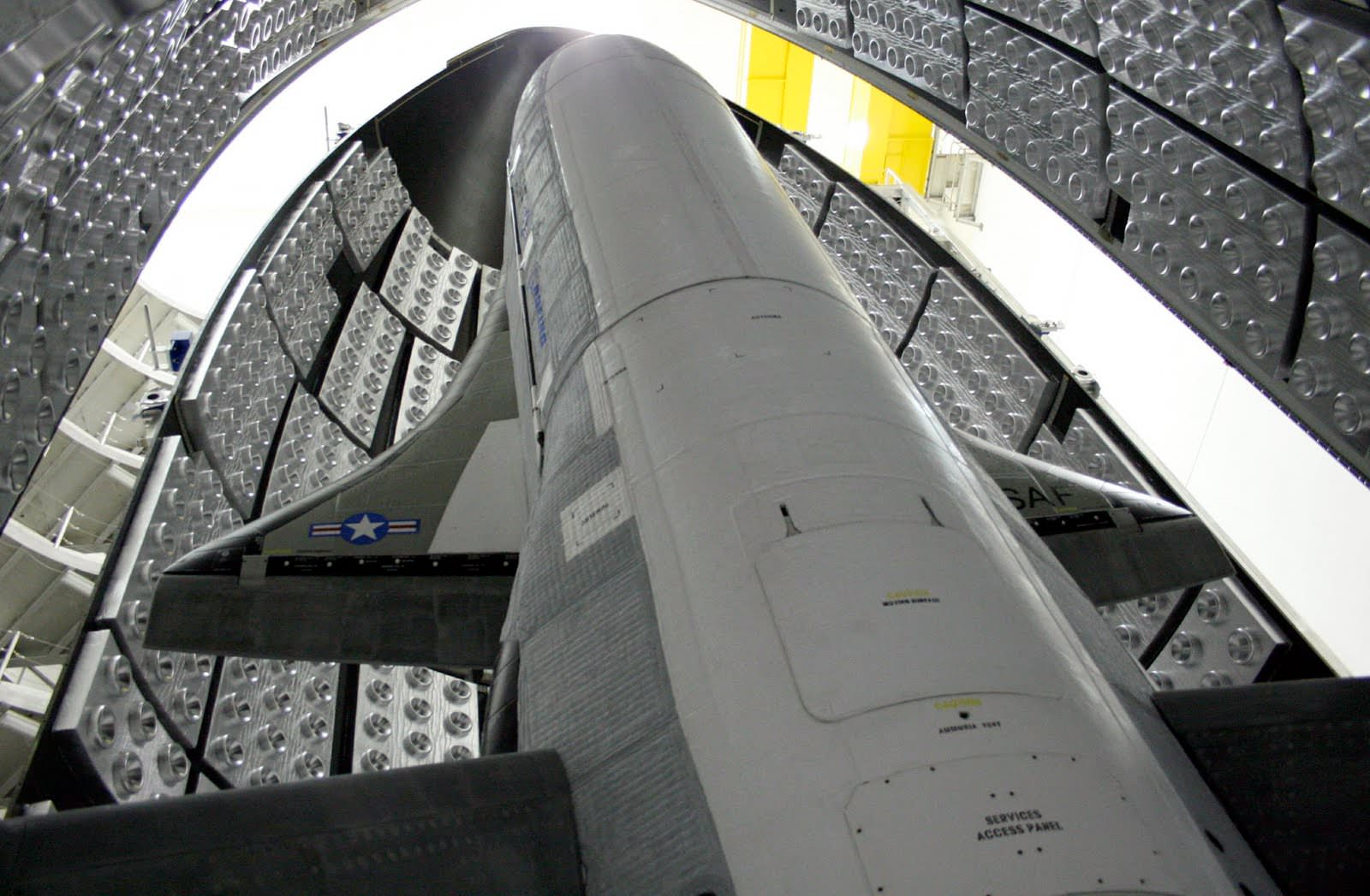There has been quite a bit of buzz in the past few years about the US Space Force (USSF), especially now that they are recruiting! The sixth and youngest branch of the US Armed Forces, Space Force was created in 2019 when the Air Force Space Command (AFSC) was broken off from the US Air Force (USAF) and made into an independent service branch.
There’s been even more buzz about the USAF’s X-37B Orbital Test Vehicle (OTV), a reusable robotic spaceplane whose official purpose is still highly classified! And now, the USAF and the U.S. Space Force have come together to launch the X-37B on its sixth mission (OTV-6). In just two days, this spaceplane will take off from Cape Canaveral Air Force Station in Florida to perform a number of tasks (some of which we know about!)
The last time the X-37B went to space, which ended in October 2019, the spaceplane spent a total of 780 days in orbit (over two years), and we still don’t know what it was doing for all that time! The spaceplane’s next mission will commence on Saturday, May 16th, as the X-37B is sent to space atop a United Launch Alliance (ULA) two-stage Atlas V booster.
While this will be the sixth outing for the reusable robotic spaceplane, it is only the second time that it will fly as part of a Space Force mission. Specifically, OTV-6 is a joint venture between the USSF and the US Air Force Rapid Capabilities Office (RCO). According to a statement made by the USSF, the purpose of this mission is to test a number of new space systems experiments the X-37B will be taking to orbit.
The task of testing systems in space and returning them to Earth is a task the X-37B program is uniquely qualified to do. With the retiring of the Space Shuttle in 2011, no spacecraft currently in operation has the ability to carry experiments to space, test them in a microgravity environment for long periods of time, then returning them home aboard the same spacecraft.
While similar experiments could be done aboard the ISS, the X-37B program ensured a far greater degree of efficiency. Not to mention security, since many of these systems are likely classified! As Barbara Barrett, the Secretary of the Air Force (which has been overseeing the X-37B program), summed up during a Livestream press conference :
“In today’s age of electrons, space systems track storms, locate stranded motorists, timestamp credit card transactions, and monitor treaty compliance. Demonstrating the department’s innovation, this X-37B mission will host more experiments than any prior missions. This launch also demonstrates the department’s collaboration that pushes the boundaries for reusable space systems.”

It will also be the first time that the X-37B will use a service module to carry its experiments. This module is attached to the aft of the vehicle and allows for additional experimental payloads to be carried to orbit. Said Mr. Randy Walden, Director and Program Executive Officer for the RCO:
“This sixth mission is a big step for the X-37B program. This will be the first X-37B mission to use a service module to host experiments. The incorporation of a service module on this mission enables us to continue to expand the capabilities of the spacecraft and host more experiments than any of the previous missions.”
According to Barrett, the mission will be carrying a number of experiments provided by NASA, the USAF, and the US Naval Research Lab. One item in the X-37Bs payload is the FalconSat-8, a small satellite built by Boeing and cadets from the USAF Academy. With sponsorship provided by the RCO, this educational platform will carry five experimental payloads that will be operated by the Academy.
In addition, two NASA experiments will be included to study the effects of radiation and microgravity on a sample of seeds. The U.S. Naval Research Laboratory is also sending an experiment that will gather solar power and attempt to transform it into radio-frequency microwave energy that can then be transmitted to the ground.
Whereas the former experiment is part of a wider effort to see if habitats and space stations in orbit will be able to grow their own food, the latter is key to the development of space-based solar power. By gathering solar power in orbit and transmitting it to stations on the ground, this technology would provide abundant renewable energy that would not be subject to meteorological factors or locality.
General John “Jay” Raymond, the Chief of Space Operations for the USSF, also lauded the accomplishments of the robotic spaceplane and the tests it is enabling during the press conference. As he said:
“The X-37B team continues to exemplify the kind of lean, agile and forward-leaning technology development we need as a nation in the space domain. Each launch represents a significant milestone and advancement in terms of how we build, test, and deploy space capabilities in a rapid and responsive manner.”
To date, the X-37B has spent a total of 2,865 days in orbit, or roughly seven years and ten months! In addition to capturing the public’s attention and firing up their imaginations with conspiracy theories, the X-37B is also testing vital technologies that will allow for autonomous spacecraft and reusable spaceplanes – both of which are central to ensuring humanity’s future in space.
Further Reading: USSF

